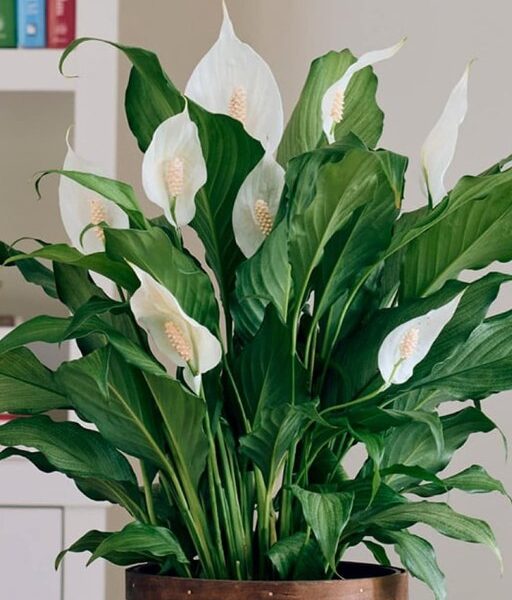With these tips your peace lily will bloom all year round
The peace lily is a perennial plant that belongs to the Araceae family with its large, lanceolate, intense green leaves, with a characteristic central vein. The flowers of the peace lily are white and surrounded by a pale green spathe that resembles a leaf and can appear throughout the year, especially in optimal growing conditions and with these tips your peace lily will bloom all year round

You might also be interested in: How to grow wax flower at home Here are all the secrets to make it bloom!
Adequate light: The peace lily grows best in environments with bright indirect light, avoiding direct sun exposure because it could burn its delicate leaves. You need to place the plant near a window or in a well-lit area of your home. If the light is not enough, you can use artificial full-spectrum lights to provide the right amount of light.
Temperature and humidity: These plants thrive at temperatures between 18°C and 24°C, avoiding temperature changes and cold drafts. The peace lily also loves humidity so regularly misting the leaves or placing a humidifier nearby can help maintain an adequately humid environment.
Watering: The key to watering the peace lily is “less is better” since these plants prefer slightly moist soil but not overwhelmed by water since it is only moistened when the first centimeter of the soil is dry. In this way you have to use a pot with a good drainage system because stagnant water will damage its roots.
Fertilizer: The peace lily benefits from a light diet since during the growing season from spring to summer you can fertilize the plant every 6-8 weeks with a balanced fertilizer. Reduce fertilizer in autumn and winter when the plant is dormant.
Pruning: We cut yellow or damaged leaves to stimulate the growth of new leaves. Regular pruning can keep the plant in shape and prevent the buildup of dead leaves.
Repot: We repeat the peace lily every 2-3 years or when we notice that the roots are completely filling the pot, using good quality soil for indoor plants and making sure the new pot is slightly larger than the previous one.
Cleaning: We clean the leaves regularly with a damp cloth to remove dust as this will help the plant to breathe better and maintain its ability to purify the air.
Common problems: Be careful with parasites such as aphids and scale insects that can attack the peace lily as the plant must be frequently inspected and treated with insecticides or natural solutions.
Reproduction: The peace lily can be propagated by dividing the rhizome or through cuttings and this will allow you to obtain new plants from a healthy mother plant.
